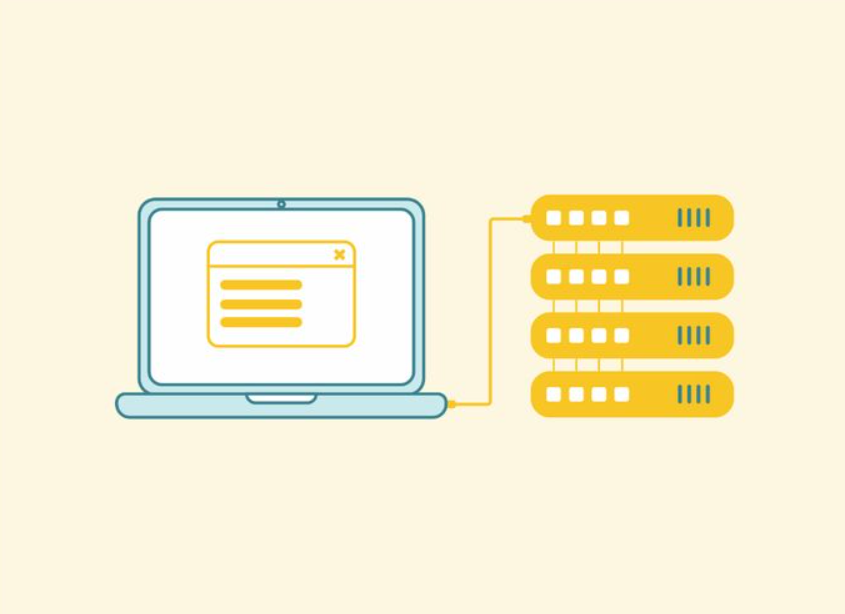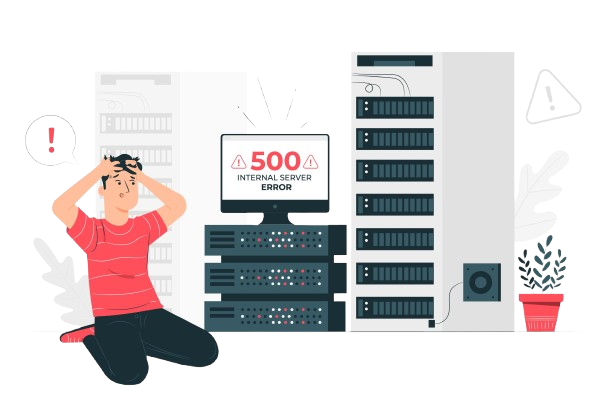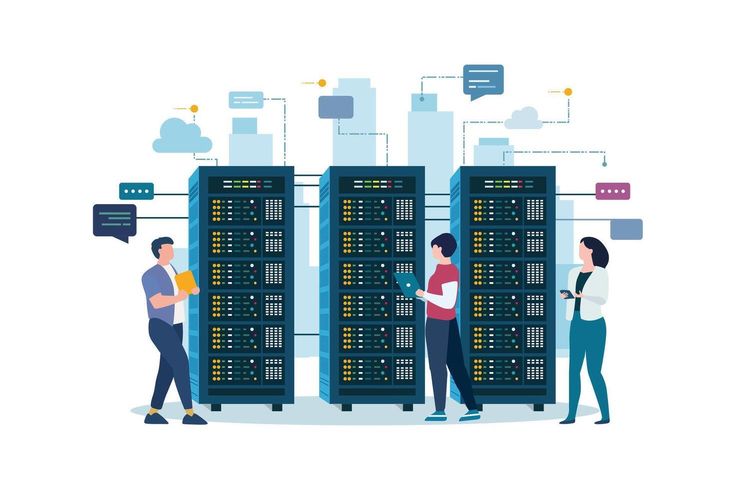Server Maintenance for Beginners: A Comprehensive Guide!
Servers play a vital role in modern computing, particularly in light of the widespread use of the Internet. While servers run round-the-clock, these machines, like any other, require regular maintenance. Regular monitoring and maintenance can prevent foreseeable server issues and prevent small failures from escalating into major disasters.
Several businesses opt for professional server maintenance support, while others have in-house teams to address this aspect. In both cases, server maintenance best practices remain essentially unchanged.

What Is a Server?
Simply put, a server is a computing device connected to a network, and it is responsible for managing the network’s resources. Servers are typically dedicated, meaning they perform specific tasks. However, single servers are capable of executing multiple programs simultaneously when used with multiprocessing operating systems.
What Purpose Does a Server Have?
Different types of servers perform various tasks. For instance, while a file server is dedicated to storing files, a database server is responsible for processing data-related queries and transactions. Other common types of servers include:
- Print servers
- Application servers
- Cloud servers
- Blade servers
- Domain name servers
- Mail servers
- Proxy servers

Server Monitoring
Server monitoring precedes all other types of support, and you can view it as server preventive maintenance. The ideal starting point is to look for a single interface that provides the ability to monitor all your servers from one location. Since you need real-time data on the hardware and software your servers use, the server monitoring software you choose should provide regularly updated information on aspects such as disk space availability, memory utilisation, and processor usage. Additionally, you should have an indication of which processes are running and the resources they utilise.
While manually monitoring server functioning is always a good idea, you may want to consider using a server monitoring tool that provides alerts through live data evaluation. The tool should have the capability to flag issues when human intervention is needed. Notifications may come via text messages or email.
Server management service providers make it a point to stay on top of server utilisation. For instance, if your business application is placing a heavy strain on your server, your service provider might suggest scaling up capacity before any further increase in demand results in a poor user experience (UX) for your customers.
Alternatives for Server Monitoring
While monitoring your server’s infrastructure is crucial, you don’t need to burn a hole in your pocket to get an indication of how your servers operate. One easy way to stick to a budget is to combine your software requirements, including network and application control.
A basic server monitoring software provides insight into aspects such as disk space utilization and processor usage. While these factors are essential, they do not provide insight into the user experience. Suppose you limit your monitoring to hardware statistics only. In that case, you may overlook other equally important aspects, such as the uptime and downtime of your cloud service provider, as well as network performance.
Alternatives that provide complete system scans are the ideal approach. This is because they give a better indication of any changes you may need to make to keep your systems running at optimal levels.
Several server monitoring tools offer free trial periods, allowing you to test them before making a decision. While evaluating different options may take time, it is worth the effort because selecting an alternative that suits you best is crucial. Some of the top server monitoring software that deserve your attention include:
- New Relic
- PRTG
- NinjaOne
- Site24x7
- Checkmk
- LogicMonitor
- Dynatrace
What Is Server Maintenance and Management?
You may think of server maintenance and management as taking your server for regular checkups and tune-ups. It’s an ongoing process of keeping software updated, hardware healthy, and security tight. This includes carrying out tasks like installing patches, monitoring performance, backing up data, and checking for vulnerabilities. Regular maintenance helps prevent server downtime, data loss, and security breaches, keeping your server running smoothly.

What Server Maintenance Support Do You Need?
The first step in effective server maintenance and management is to determine what kind of resources you need. Signing up for more capacity than you require is not the best approach, as you may end up paying for utilities and support that you may never use. However, you also need to account for any potential surges in demand that may arise in the future.
When accounting for computing requirements, you also need to consider aspects such as your physical or virtual network, power supply, physical space, and dedicated personnel. These factors, when put together, often create unique scenarios. This is why you need to approach server maintenance with a perspective that is tailored to your business.
System administrators utilise various server maintenance tools to monitor automated alerts, pending patches, license expirations, and hardware availability.
What Happens During Server Maintenance?
If you’re wondering how to maintain a server, it might be worth your while to look at what the professionals do. No matter what type of server you use, some of the procedures that server management companies employ remain the same. So, how do you maintain a server system?
- Accessibility. Managing a server requires a server maintenance service, tool, or software that gives you access to the server in question.
- Monitoring. Server maintenance involves ongoing monitoring of performance and detecting anomalies.
- Updates. One of the basic functions of server maintenance companies is to identify, start, and install relevant firmware and software updates.
- Set up. Another important aspect of server maintenance is the ability to set up new software or functionalities.
- Planning capacity. Capacity planning indicates future server utilisation, allowing you to determine when additional resources are needed.
- Optimization. Some server maintenance services and tools come with optimisation functionalities that aid in improving overall server efficiency.
- Alerts. No list of server maintenance best practices is complete without addressing this factor. This is because real-time alerts surrounding aspects such as errors and downtime play a crucial role in effective server management.
Server Maintenance Checklist.
This server maintenance checklist addresses all the crucial aspects that need your attention.
- Determine if your backups are working.
- Check your disk usage and server utilisation.
- Check system security.
- Check online management tools.
- Check for application updates.
- Test remote management tools.
- Monitor RAID (Redundant Array of Independent Disks) controller alarms.
- Update your operating system and control panel.
- Identify hardware errors.
- Change passwords.
- Analyse user accounts.
The Importance of Server Support and Maintenance!
If you are part of a mid-sized or large business, there is a good chance that your business relies on multiple servers. Regardless of the type of servers you use, it is not out of place to compare them to any other piece of mechanical or electronic equipment. This is because all require ongoing maintenance to operate at optimal levels.
Effective server maintenance ensures that your servers run smoothly, as does your website. For instance, do you know that when a server that hosts a website stops running, it results in a 404 error message? Not only does regular server maintenance result in increased lifespan, but it also boosts overall business productivity by minimising system downtime.
Efficient server management also provides peace of mind. Consider this – in the unfortunate event of a server crash, you will be able to recover much of your data because your backups are up to date.
Server Administration Roles!
The size of your business and the number of employees it has play a role in the flexibility you have when assigning server administration roles. Top management is typically responsible for infrastructure management. On the other hand, regular maintenance is usually the responsibility of junior staff or assigned to automated server maintenance support tools.
When it comes to large business servers, one might assign specific roles to different individuals, in which case, providing or restricting access to management functions becomes essential. Large businesses might also require access to remote administration tools and other types of server management software.
A small business may suffice with single-user accounts and associated user roles to manage its server maintenance. Even in such a scenario, senior management can get direct access to the reports it needs.

Selecting the Right Server Maintenance Support Tools.
There is a good chance you will keep using the server maintenance support tools you select for a long time. As a result, consider your alternatives carefully while keeping these factors in mind.
- Compatibility with vendors. While your existing hardware provider might fulfil all your existing needs, you might end up dealing with multiple providers as you upgrade your machines. This requires you to steer clear of server management tools that restrict you to any particular server management company.
- Size matters. All types of software use resources to varying degrees. In most cases, server maintenance providers offer tools that fit clients of different sizes. For instance, some server maintenance support tools are well-suited for large businesses, while others are more effective for small to mid-sized companies. What’s important is to avoid getting tools that slow down your website and ones that generate excessive traffic on your network. After all, excellent web design will not serve the purpose if your website takes a long time to load.
- Determine server administration requirements. Different server upkeep tools come with distinct features, which is why you need to determine your company’s server administration requirements at the onset. For instance, you might consider opting for a comprehensive small business server maintenance plan; however, it is essential to avoid paying for tools you may never use. However, a large business may benefit from acquiring a tool that includes group management functionality.
- The need to scale up. It is not uncommon for computing requirements to change with time. Small to mid-sized businesses should consider investing in scaled-down alternatives specifically designed for their needs, rather than opting for solutions intended for large companies. This is because when the time comes to scale up, you do not have to worry about extensive retraining. A server maintenance support tool designed for smaller environments might fulfil your business requirements now, but you need to account for the learning curve if you need to switch service providers in the future.
- Automation. When it comes to modern-day server maintenance, simply running regular checks no longer makes the cut. Given the time-consuming nature of running standard server administration and maintenance procedures, it is advisable to consider automating the process. With access to good software, you can reduce a significant portion of server management tasks to no more than checking logs. This, in turn, gives system administrators and others involved in the process more free time.
What a Server Maintenance Company Can Do for You!
Several companies offer professional server maintenance support across various platforms, including Windows, Linux, and UNIX, to large companies, data centres, and internet service providers (ISPs). While the services offered may vary from one server maintenance services company to the next, some offerings remain consistent. Depending on your requirements, you may expect to find:
- Secure infrastructure.
- Round-the-clock server monitoring and management.
- Management of server performance.
- Management and optimisation of server security.
- Data backup.
- Data recovery.
- Server migration.
- Customised database replication.
- Diagnosis and troubleshooting of problems.
- Proactive and regular updates.
- Round-the-clock customer support.

Do You Need Professional Server Maintenance Services?
Using a server maintenance support tool to handle server maintenance requirements may be beneficial for some. However, the individual or team operating the tool must have a complete understanding of how it functions. In the absence of technical expertise, consulting a professional server maintenance company may be the best approach. Benefits can come in the form of:
- Skills/experience. You don’t have to worry about hiring a system administrator or training an existing employee. The server support company you select provides the skill set you require.
- The monthly or annual server maintenance cost for professional services might end up being lower than the cost you would incur in ramping up internal capabilities.
- Scaling up. All good server maintenance providers are efficient when it comes to meeting their clients’ needs to scale up their server requirements.
- Support. All leading companies that manage server maintenance provide 24/7 over-the-phone support with guaranteed response times.



